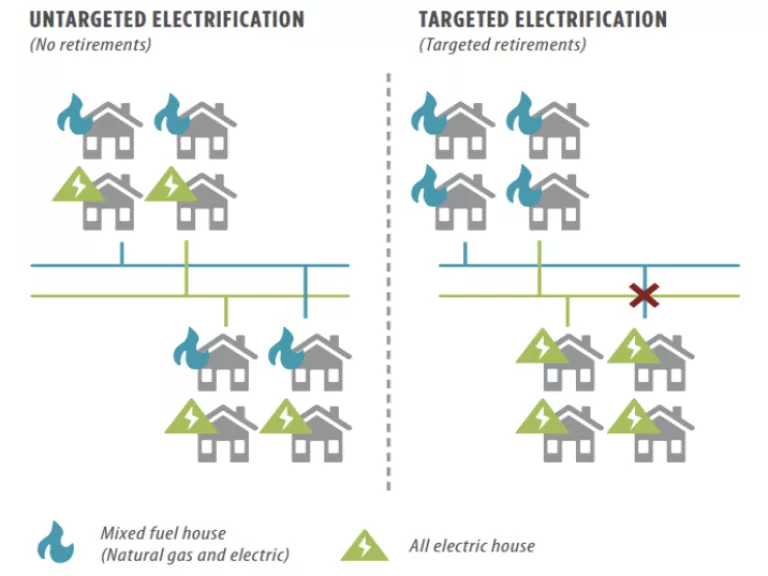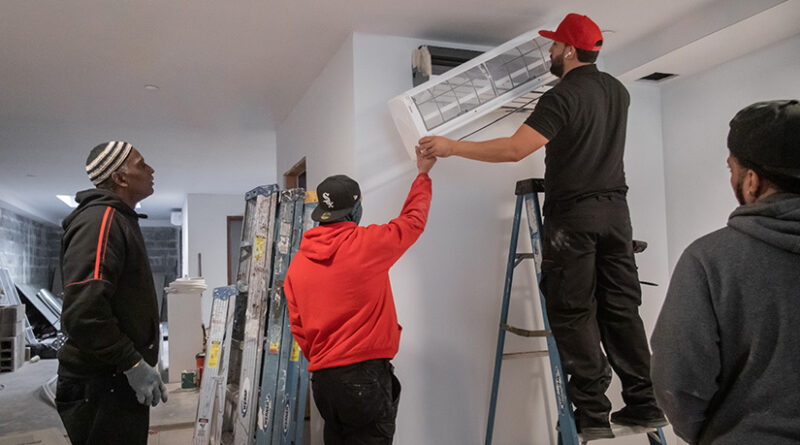California: $20 Billion Potential Savings from Targeted Electrification
New analysis shows targeted electrification could save Californians more than $20 billion in gas pipeline costs by 2045 while tackling climate emissions.
The transition from gas heating appliances to clean, efficient electric heat pumps is already underway in California — yet gas utilities continue to spend millions of dollars each year to replace gas pipelines.
As California transitions to all-electric appliances, which is the most cost-effective way to reduce pollution from our buildings, state leaders face a pivotal choice: Keep pouring billions into new gas infrastructure that is likely to be underutilized or realign our spending with the clean energy transition. New analysis from Energy + Environmental Economics (E3) shows just how enormous the financial stakes are.
The study finds that targeted electrification, which equips homes served by aging gas pipelines with energy-efficient electric appliances, can save utility customers between $15–26 billion in gas infrastructure costs by 2045 by bypassing costly gas pipeline replacements. But California is running out of time to take advantage of these savings. The Legislature needs to act this year by strengthening and passing Senator Min’s Senate Bill (SB) 1221, and the California Public Utilities Commission (CPUC) should support by improving oversight on planned gas pipeline investments within its Long-Term Gas Planning Rulemaking.
Gas Utilities Spend Millions Each Year to Replace Pipelines
Investing in gas pipelines today is like buying a (very expensive) BlueRay player just before the dawn of streaming — it’s not a wise investment. Yet gas utilities continue to invest millions of dollars each year in gas pipeline replacements that customers are expected to pay off over five decades or longer, even as households transition to clean, all-electric appliances in line with state climate policies.
Over the past decade, gas utilities spent more than $33 billion on gas infrastructure. Today, the “net value” of the system stands at $35 billion, which gas customers continue to pay back, plus interest, on their bills. Without intervention, the financial burden will only grow. E3 finds that California investor-owned gas utilities will more than double the cost of the system over the next two decades if business-as-usual continues: spending about $43 billion through 2045 to replace 8,900 miles of gas distribution pipelines, representing 6-10 percent of the distribution system. Notably, this number does not include the likely significant amount gas utilities are expected to spend on gas transmission infrastructure, which customers also pay for on gas bills.
Failing to adjust course will lead to crippling rate hikes as customers depart the gas system. Previous analysis from Gridworks and E3 found that, if spending in the gas system continues unabated while customers shift to clean energy, remaining gas customers could face rate increases of over 900 percent by 2050. Without intervention, low-income households are at risk of being stuck with the highest share of these costs as better-resourced households switch to clean electricity. Fortunately, targeted electrification provides a cost-effective alternative to pipeline replacement projects in many cases — offering a no-regrets chance to save gas customers money today and long into the future.
The No-Regrets Option: Targeted Electrification
The way targeted electrification works is simple: when a gas pipeline reaches the age where it needs to be replaced, the gas utility considers whether electrifying the households served by the pipeline would be more cost-effective than replacing the pipeline. If it is, the utility can work with households in the area to complete a targeted electrification project, delivering savings to all gas customers while also cutting climate emissions. E3 finds that replacing gas pipelines costs an average of $32,000 per customer, making electrification a cost-effective solution in most cases.

Credit:E3, “The Challenge of Retail Gas in California’s Low Carbon Future,” California Energy Commission.
At scale, targeted electrification projects can save gas customers tons of money — hundreds of millions per year in early years, and nearly $2 billion per year by 2045. Through 2045, E3 estimates that the pool of cost-effective and technically feasible projects would impact only about 3–4 percent of current gas customers but could deliver more than $20 billion in savings from avoided gas pipeline costs.
To date, Pacific Gas & Electric (PG&E) has completed more than 100 targeted electrification projects at a small scale, with each project impacting a small number of households. However, direction from the State Legislature is necessary to scale up these projects statewide and ensure utilities deliver these savings to customers.
The Legislature Can Act this Year
An improved version of a bill being considered in the State Legislature — SB 1221 (Min) — could put California on a path to scaling up some targeted electrification projects. Currently, the bill would enable 30 projects to move forward as long as the projects are cost-effective and 67 percent of affected households agree to participate. Most details of these pilots would be determined by the CPUC, but, in the fully voluntary pilots PG&E has completed to date, targeted electrification provides free electric appliance installations to all impacted households while still delivering net savings to all other gas customers.
Notably, the CPUC and the California Energy Commission have taken strong action to minimize the number of new properties connected to the gas system. But California is falling behind other states on the issue of pipeline replacements. This year, Washington State and Colorado both passed bills related to targeted electrification, while states like Massachusetts, Colorado, New York, and Illinois all require increased oversight on new gas investments, often including requirements to compare planned gas infrastructure projects to clean energy alternatives like electrification. SB 1221 can and should be improved, but what is certain is that California lawmakers need to take meaningful action this year to reduce gas system costs and ensure customer dollars go to infrastructure that will serve them long into the future.
By Kiki Velez, Equitable Gas Transition Advocate, Climate & Energy, NRDC, Expert Blog
Have a tip for CleanTechnica? Want to advertise? Want to suggest a guest for our CleanTech Talk podcast? Contact us here.
Latest CleanTechnica.TV Videos

CleanTechnica uses affiliate links. See our policy here.

